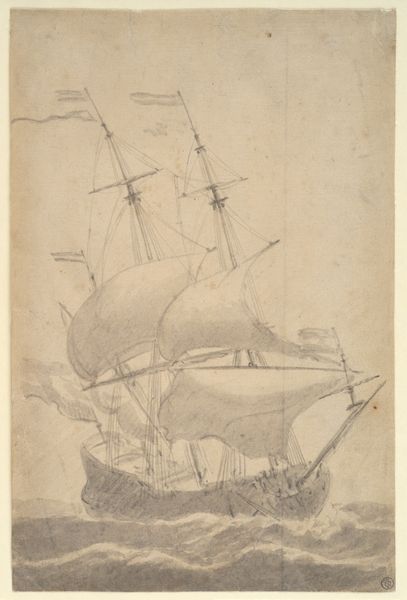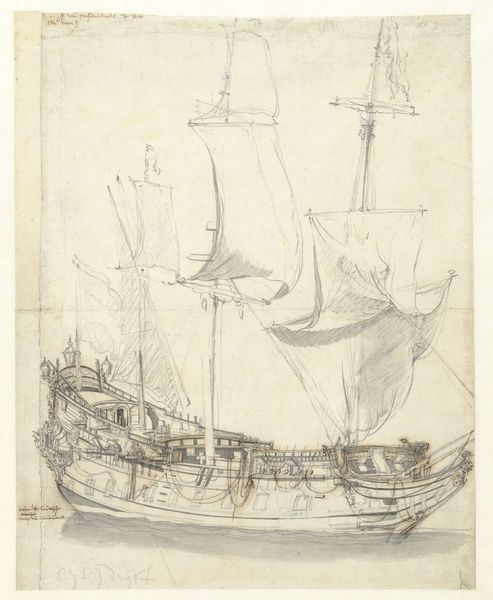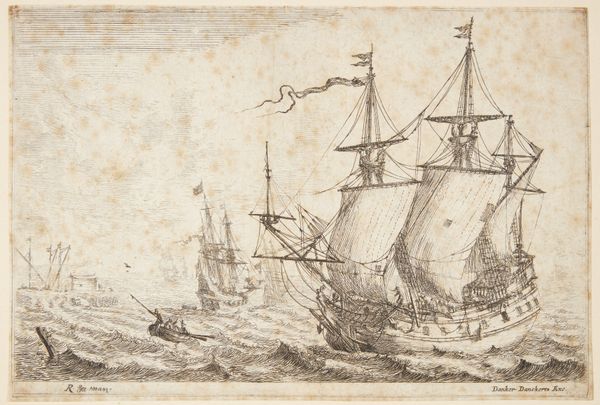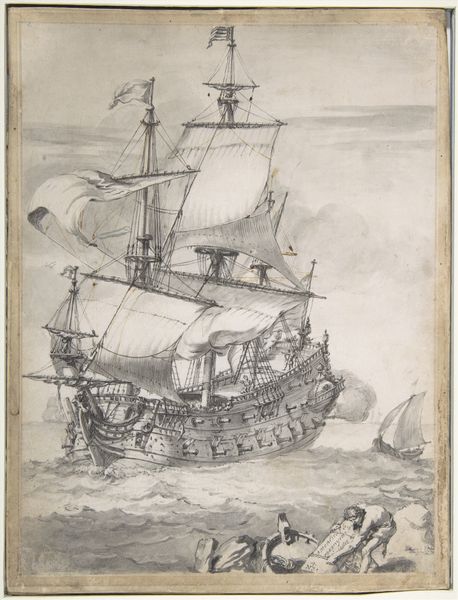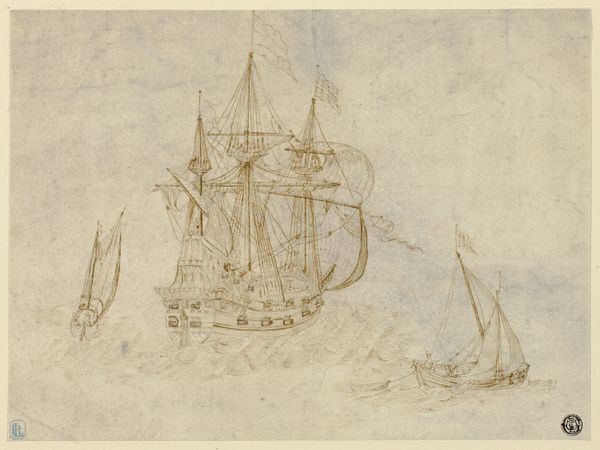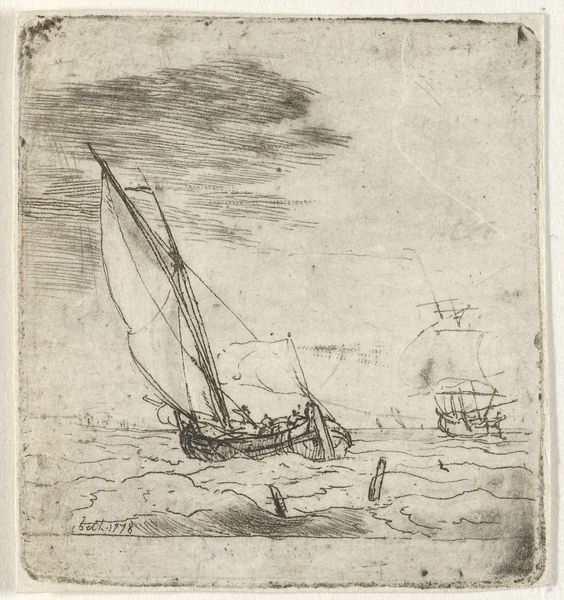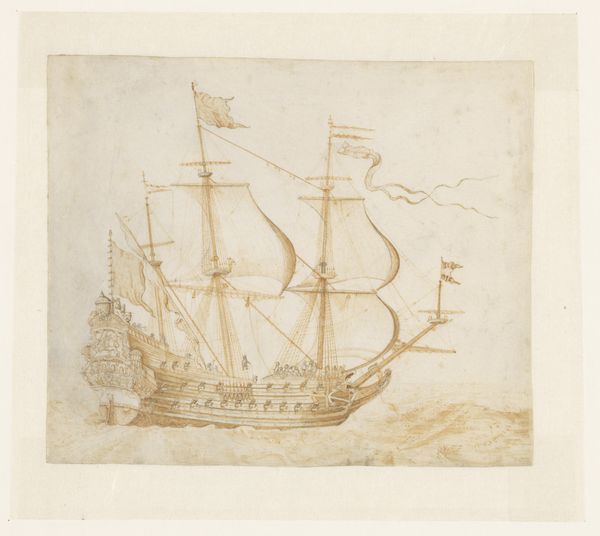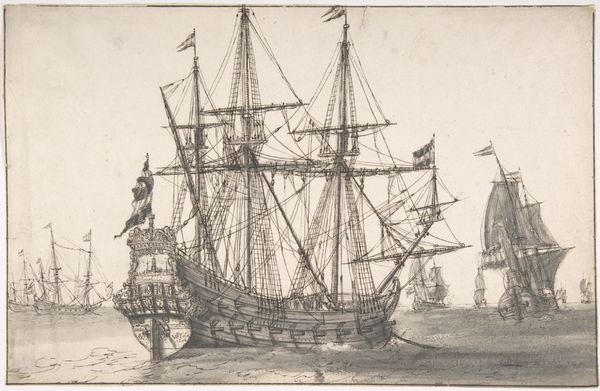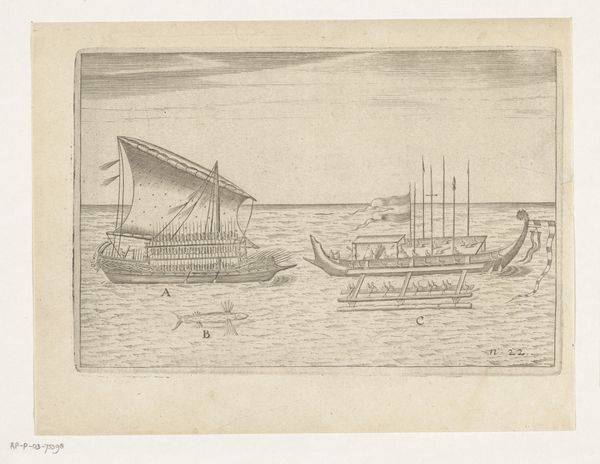
drawing, print, paper, ink, chalk, graphite
#
drawing
#
baroque
# print
#
landscape
#
paper
#
ink
#
chalk
#
graphite
Dimensions: 319 × 224 mm
Copyright: Public Domain
Editor: This is "Two Frigate," a 1641 drawing by Claude Lorrain in the Art Institute of Chicago, rendered in ink, graphite, and chalk on paper. It feels almost like a study, preliminary perhaps, but the ships are rendered with an incredible amount of detail! How do you interpret this work in its historical context? Curator: It’s intriguing, isn’t it? Consider the context: 17th-century Europe, burgeoning maritime trade, colonial expansion. Lorrain wasn't simply depicting ships; he was participating in a visual culture that glorified seafaring power. What statement does such imagery, and its consumption by the wealthy merchant class, reinforce? Editor: Well, I guess it celebrates commerce, exploration, and power on the open seas. The detail definitely suggests a level of prestige and craftsmanship. Curator: Precisely! And remember who was commissioning and consuming art like this. Were these just innocuous images or did they legitimize particular political and economic structures? What do you think about the location, a museum, contextualizes it further for today's audience? Editor: Good question. By placing it in a museum, does that maybe legitimize that colonial past, especially when visitors come from all backgrounds, including some affected by that history? Curator: Indeed. It makes us think about the complex and sometimes uncomfortable role museums play in shaping historical narratives. Lorrain’s "Two Frigate," then, becomes more than just a drawing of ships. Editor: I see. It encourages us to examine the broader power dynamics at play. It’s definitely made me consider it differently, beyond just the aesthetic qualities. Curator: Absolutely. It’s through that critical lens that we can really engage with these works and understand their ongoing relevance and cultural role. Editor: Right. Now I see how history shapes not only the creation of the piece, but also the reception of the artwork across different ages and communities. Thank you!
Comments
No comments
Be the first to comment and join the conversation on the ultimate creative platform.
